Although many employees continue to view their benefits positively, both their perceived value of the benefits provided and their trust in the company to make the best benefits decisions have declined a bit since the onset of COVID-19, according to a new study by The Hartford.
Future of Benefits Study Reveals Shifts in Attitudes About Employee Benefits Amid Pandemic
 The Hartford released new research on the Future of Benefits, finding that both employee and employer attitudes about benefits have shifted in the wake of COVID-19.
The Hartford released new research on the Future of Benefits, finding that both employee and employer attitudes about benefits have shifted in the wake of COVID-19.
The Hartford conducted the survey in two waves - the first wave in March, 2020, just before the outbreak of COVID-19 in the US - and the second wave in June, 2020, after the pandemic forced widespread lockdowns and economic disruption. The survey found slight employee erosion on 3 specific questions related to sentiment:
- "I value the insurance benefits my company provides;"
- "I trust my company is making the best decisions about benefits available;"
- "Rate your organization's overall benefit package compared with what other employers are offering."
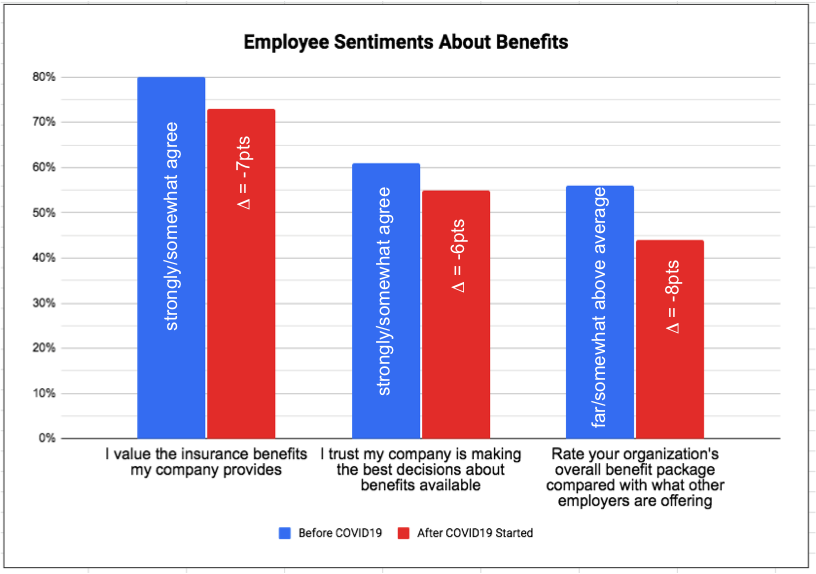
While there has been a slight decline in sentiments, it's important to note that a strong majority (73%) still value their organization's benefits and indeed count on them for support, especially during COVID-19.
Employers Are Stepping Up with More Employee Benefits
In response, The Hartford found that many employers are actively considering additional benefits to support employees during the pandemic.
In order of greatest change (before vs. after) in interest, the additional benefits included:
- Paid time off for volunteering
- Additional PTO*
- Employee Assistance Programs (EAP)
- Paid sabbatical
- Hospital indemnity insurance
- Critical illness insurance
- Student loan repayment plans
- Mental and behavioral health services
- Wellness benefits
- Pet insurance
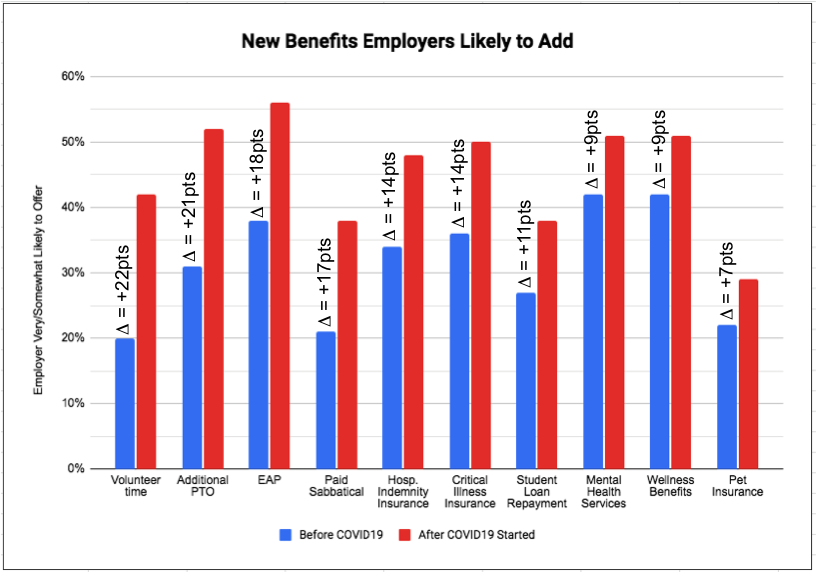 How do these new benefits rank with employees?
How do these new benefits rank with employees?
Adding new employee benefits sounds great, but do these resonate with employees? According to the study, the top ranked benefits from the employee perspective were:
- Additional PTO*
- Paid time off for volunteering
- Employee Assistance Programs (EAP)
- Hospital indemnity insurance
- Paid sabbatical
Plotting these new rankings shows a clear overlap for EAPs and additional PTO. Interestingly, employees give more relative priority to volunteer time than employers. Something organizations should note as they prioritize their benefits packages for 2021.
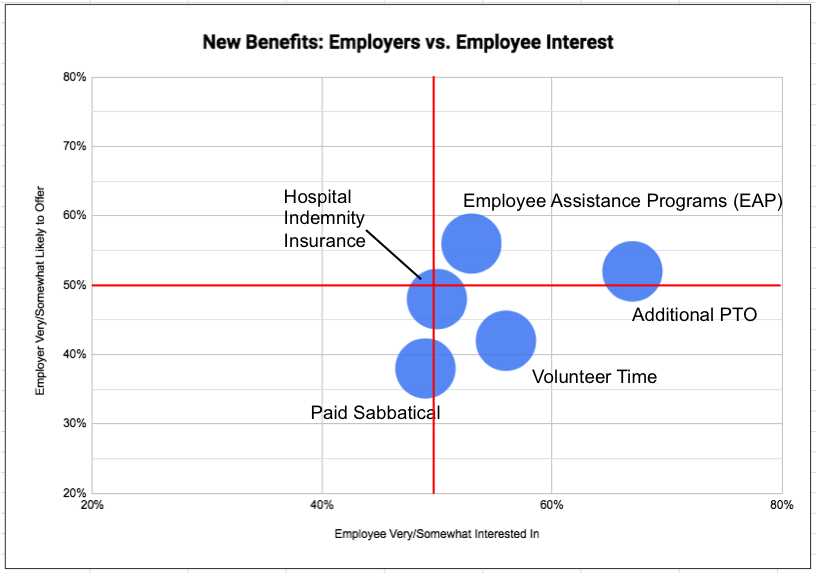
Key Findings of the Future of Benefits Survey Include:
- There has been some erosion in how employees view their benefits, but a large majority still rely on and value their existing benefits.
- Employers are actively considering additional benefits, with the greatest changes in interest relating to paid volunteer time, additional PTO, and EAPs.
- Employee rankings largely align with employer considerations, with paid volunteer time, additional PTO, and EAPs being most important.
- Economic stressors means helping employees meet short-term needs is a top priority. The focus has shifted to more personal stressors, including debt levels, saving for the future, and caring for family. First things first.
- Employers and employees largely are satisfied with their company's response. A majority of both groups believe that their company's response has been adequate.
 "The pandemic has put pressure on the American workforce in ways few could have predicted and employees need support more than ever," said Jonathan Bennett, head of Group Benefits at The Hartford.
"The pandemic has put pressure on the American workforce in ways few could have predicted and employees need support more than ever," said Jonathan Bennett, head of Group Benefits at The Hartford.
“Now is the perfect time for employers to address employees’ changing attitudes about benefits. As employee familiarity with benefits also declined, our research uncovered an opportunity for employers to increase trust by focusing more on communication, including education about their available benefits and what they cover. This is going to be crucial as annual benefits enrollment quickly shifts from an in-person experience to a more virtual one.”
Bennett says that in addition to adding and expanding benefit offerings, it is key for employers to communicate and remind employees about available resources. That’s an especially important lesson in preparation for open enrollment season this fall.
“Communication is crucial,” he says. “HR departments need to be engaging their workforce. A moment like this reveals things that a lot of people haven’t thought about or considered but now reveals what needs to be done.”
Check out The Hartford press release and access to the full survey results.
How Has COVID-19 Impacted Employee Stressors?
COVID-19 has impacted employee stress factors. The biggest changes relate to personal stressors, led by a +14 point increase in "social/political climate." Stress around debt levels and saving for the future also understandably increased, as employees feel the pinch of economic contraction and uncertainty.
Employees were asked which three factors they feel are currently contributing most to their stress levels:
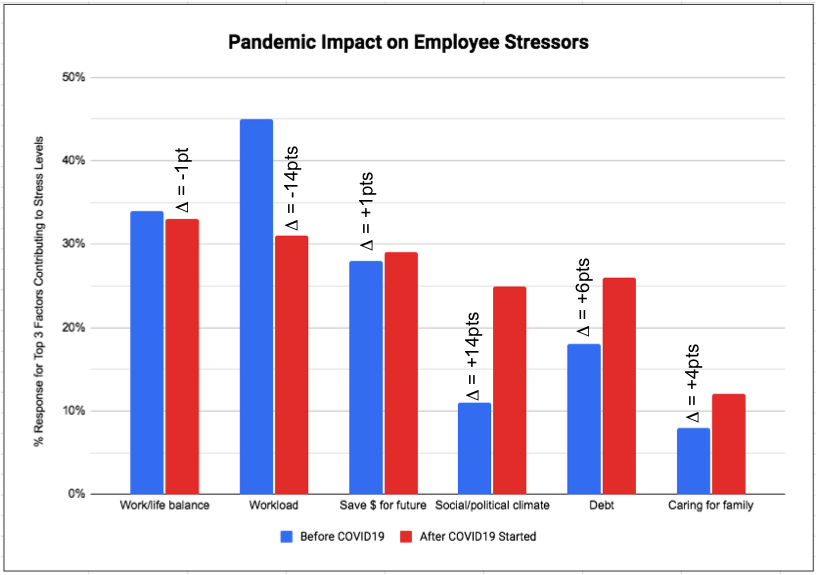
How Do Employers and Employees Rate Their Response to COVID-19?
The study also asked both employers and employees to rank their company's overall response to COVID-19.
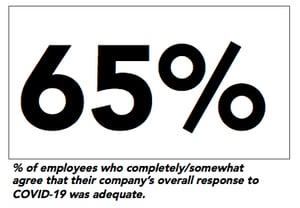 Interestingly, there is high alignment between both employees and employers. A majority of both groups believe that their company's response has been adequate. A much smaller minority neither agree nor disagree and the smallest percentage of respondents did not agree that the response was adequate.
Interestingly, there is high alignment between both employees and employers. A majority of both groups believe that their company's response has been adequate. A much smaller minority neither agree nor disagree and the smallest percentage of respondents did not agree that the response was adequate.
It seems many organizations are doing what they can to support employees during the pandemic, and this is recognized by most employees as well.
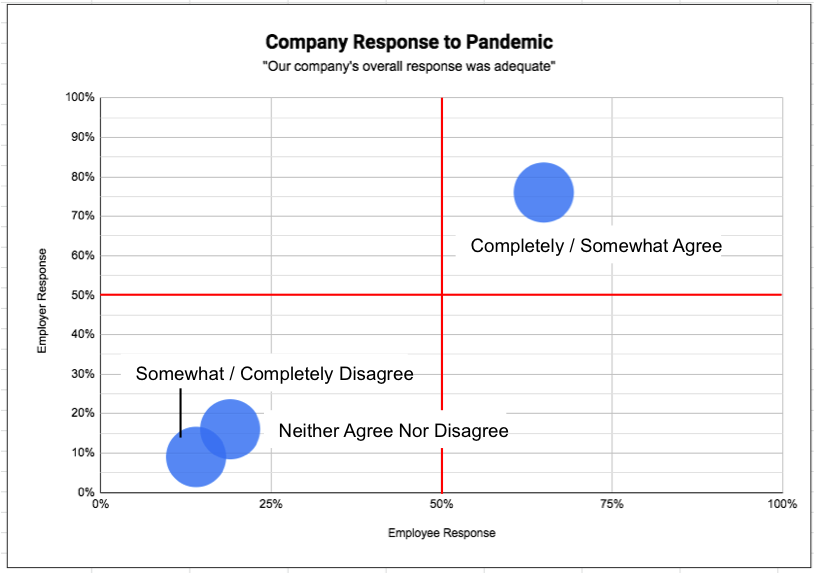
Future of Benefits Methodology
The Hartford’s 2020 Future of Benefits Study was an online survey fielded in two waves. The first wave was fielded from Feb. 27-March 13, 2020, just before the pandemic escalated in the United States, and included 761 employers and 1,503 employees. The second wave was fielded from June 15-June 30, 2020 and included 567 employers and 1,038 employees. The employers surveyed were HR professionals who manage/decide employee benefits and employees surveyed were actively employed. The margin of error is employer +/-4% and employee +/-3% at a 95% confidence level.
*Note: While the difference was significant, the sample size on PTO was much smaller than other options as most employers surveyed already offered some type of PTO.
Use PTO to Enhance Employee Benefits
PTO Exchange has developed a flexible benefits platform that turns unused paid time off (paid time off) into liquid assets that can be converted into things employees value – retirement accounts, student loan payments, emergency cash-out, donations, leave-sharing, charitable causes and more.
This is a notable time with many companies making bold adjustments to their employee benefits strategy and are trying to find new ways to help their employee community bridge the changes that are affecting their lives.
If enhancing financial wellness and providing flexibility through PTO conversion is something that can help your organization navigate through this situation, we are here to help.
Learn more how PTO Exchange can help with COVID-19 by downloading our free data sheet.
Additional Resources:
Published on Nov 03, 2020 by Gregg Makuch
